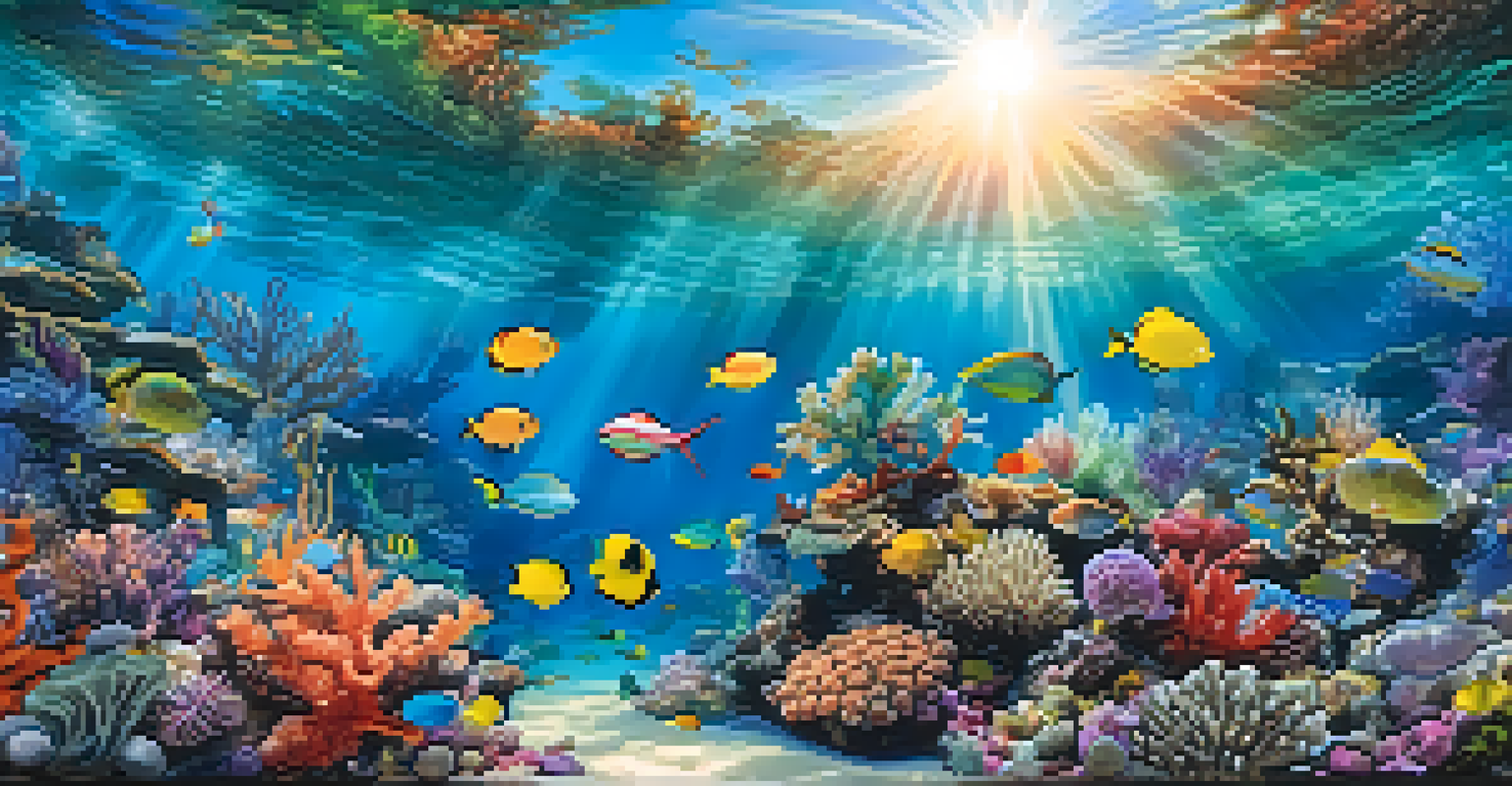The Role of Animation in Addressing Social Issues in Film

Animation as a Unique Storytelling Medium
Animation offers a distinctive way to tell stories, allowing for boundless creativity. Unlike live-action films, animated features can create fantastical worlds and characters that resonate with audiences on emotional levels. This flexibility permits filmmakers to explore complex themes without the constraints of reality, making heavy topics more approachable.
Animation can explain whatever the mind of man can conceive.
For instance, films like 'Zootopia' cleverly weave social issues such as prejudice and discrimination into a vibrant, animated narrative. By using animals to represent diverse social groups, the film invites viewers to reflect on their biases in a relatable way. This approach allows audiences to engage with serious subjects while still enjoying an entertaining experience.
Ultimately, animation transcends cultural and language barriers, making it an effective medium for discussing social issues globally. The universal themes often present in animated films can spark conversations that might be uncomfortable in traditional formats. This accessibility is essential in addressing topics that require broader understanding and empathy.
Creating Empathy Through Relatable Characters
One of the most powerful aspects of animation is its ability to create characters that evoke empathy. Animated characters often embody traits that make them relatable, whether through their struggles or triumphs. This connection allows audiences to see parts of themselves in these characters, fostering a deeper understanding of diverse experiences.

Take 'Inside Out', for example, which personifies emotions to explore the complexities of mental health. Through the character of Riley and her emotional journey, viewers gain insights into the challenges of growing up and dealing with change. This representation helps demystify mental health issues, encouraging discussions that may otherwise be avoided.
Animation as a Social Commentary
Animated films creatively explore complex social issues, making them accessible and engaging for a wide audience.
By presenting social issues through the lens of character-driven narratives, animation can effectively break down barriers. As viewers connect emotionally with these characters, they become more open to exploring the underlying issues being portrayed. This emotional engagement is crucial in driving awareness and promoting positive change.
Addressing Environmental Concerns in Animated Films
Animation has also played a significant role in raising awareness about environmental issues. Films like 'WALL-E' highlight the consequences of consumerism and neglect towards our planet. By depicting a dystopian future resulting from environmental degradation, the film serves as a cautionary tale that resonates deeply with audiences.
The power of storytelling is the ability to create connections and change perspectives.
Through imaginative visuals and storytelling, animated films can communicate complex ecological concepts in a digestible manner. This is particularly important for younger audiences, who may be more susceptible to adopting environmentally conscious behaviors. By engaging with these themes early on, animation can influence the next generation's approach to sustainability.
Moreover, animated documentaries such as 'The Last Unicorn' showcase real-world environmental challenges while captivating viewers with stunning artistry. This blend of entertainment and education can inspire action, urging audiences to take steps toward protecting the environment. Animation, therefore, becomes a powerful tool for advocating ecological responsibility.
Exploring Identity and Cultural Representation
Animation serves as an important platform for exploring identity and cultural representation. Films like 'Coco' celebrate cultural heritage and emphasize the significance of family and tradition. By sharing these stories, animation fosters understanding and appreciation for diverse backgrounds, encouraging inclusivity.
Moreover, animated films often tackle themes of identity, such as in 'Raya and the Last Dragon', where the protagonist embarks on a journey of self-discovery and unity. These narratives allow viewers to reflect on their own identities and the importance of connection amidst differences. In this way, animation can facilitate discussions about belonging and acceptance.
Empathy Through Relatable Characters
Animation fosters empathy by using relatable characters to help audiences connect with diverse experiences and emotions.
By showcasing varied cultural perspectives, animated films can challenge stereotypes and broaden viewers' horizons. This representation is crucial in a globalized world where understanding different cultures leads to greater empathy. Animation, therefore, plays a vital role in promoting diversity and fostering a sense of community.
Using Humor to Address Serious Topics
Humor is a powerful tool in animation, often used to tackle serious social issues in a lighthearted way. Comedic elements can make difficult subjects more palatable, allowing audiences to engage with them without feeling overwhelmed. This approach can lead to meaningful conversations about the issues at hand.
For example, 'The Simpsons' has long addressed topics like politics, class disparity, and social norms through satire. By using humor to critique societal issues, the show invites viewers to reflect on these topics while being entertained. This blend of comedy and commentary can make complex discussions more approachable.
Moreover, films like 'Shaun the Sheep Movie' subtly address themes of community and belonging through humor and charm. By presenting serious ideas wrapped in a comedic narrative, animation encourages audiences to think critically while enjoying the experience. This unique approach underscores the versatility of animation in addressing social concerns.
Animation's Role in Advocacy and Awareness Campaigns
Animation has become an essential tool in advocacy and awareness campaigns focused on social issues. Short animated clips are often used on social media platforms to convey messages quickly and effectively. Their engaging nature captures attention, making them ideal for spreading awareness about causes like mental health, climate change, and social justice.
For instance, the 'It's On Us' campaign used animated videos to address sexual assault on college campuses. By presenting the issue in a relatable format, the campaign encouraged conversations around consent and accountability. This approach not only raises awareness but also empowers individuals to take action.
Humor as a Tool for Awareness
Comedic elements in animation effectively address serious topics, encouraging meaningful conversations while entertaining viewers.
Furthermore, animated PSAs can simplify complex topics, making them more accessible to diverse audiences. By combining visual storytelling with impactful messages, animation can drive social change and inspire individuals to get involved. The versatility of animation in advocacy emphasizes its importance in today's media landscape.
The Future of Animation and Social Issues
As technology advances, the future of animation presents exciting opportunities for addressing social issues. With the rise of virtual reality (VR) and augmented reality (AR), animators can create immersive experiences that allow viewers to engage with social topics on a deeper level. This innovation could revolutionize how audiences perceive and understand social issues.
Moreover, as diverse voices continue to emerge in the animation industry, we can expect a wider array of stories that reflect various perspectives. This inclusivity will enrich the medium, bringing forth narratives that tackle underrepresented social issues. The evolution of animation will likely lead to more meaningful discussions around topics that matter.

Ultimately, animation's role in addressing social issues will continue to grow. As filmmakers embrace the potential of this medium, audiences can look forward to more thought-provoking stories that inspire change and encourage empathy. The future of animation is not just about entertainment; it's about using creativity to drive social progress.